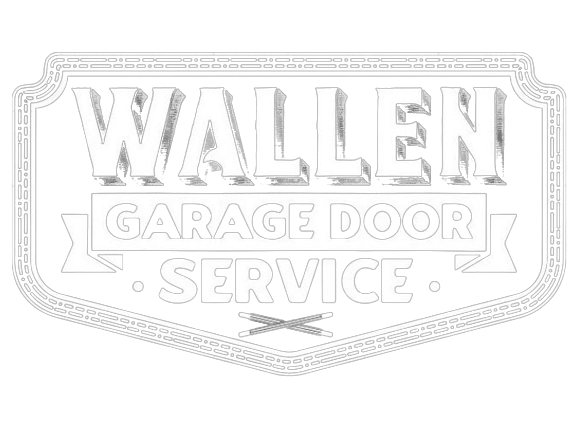Imagine this: you’re in a rush to get somewhere, and just as you’re about to pull out of your driveway, you realize the power is out, and your garage door opener won’t budge. Or maybe you’ve misplaced your remote, and you’re standing there with no way to get inside. For many homeowners, getting locked out of their garage can be a frustrating and sometimes nerve-racking experience. Fortunately, there’s a simple and effective way to open your garage door manually from outside that could save you time, hassle, and even a costly call to a professional.
In this detailed guide, we will walk you through everything you need to know about manually opening a garage door from the outside, even when you don’t have a remote or electricity. This step-by-step breakdown will help you understand how to access your garage without any additional equipment. We’ll also dive into safety tips, potential risks, and expert advice on avoiding damage to your garage door system. Whether you’re stuck during a power outage or just forgot your remote, this tutorial will ensure you’re never left stranded again.

How to Open a Garage Door Manually From Outside Without Power
When your garage door opener isn’t functioning due to power outages or malfunctioning, the manual release system is the most effective way to open your garage door manually from outside. Most modern garage doors have this feature for safety and convenience. But, before we get into how to do it, it’s essential to understand the components of your garage door system to ensure you’re handling everything safely.
Understanding the Emergency Release Cord
The emergency release cord is the key element in the garage door’s manual override system. Located inside the garage, this cord disconnects the door from the automatic opener. Once disengaged, the door can be lifted manually. Typically, you access the cord from the inside, but in some cases, you can reach it from the outside through a small emergency release lock.
What You’ll Need:
- A flathead screwdriver or a similar tool
- Knowledge of your garage door’s emergency release system
Step-by-Step Guide: Opening the Garage Door Manually from Outside
Step 1: Locate the Emergency Release Kit
Most garage doors come equipped with an emergency release kit that’s located on the garage door itself. This is usually a small lock near the center of the door. To access the manual release from outside, you will need to insert the key into this lock.
Step 2: Use the Emergency Release Key
Once you locate the emergency release lock, use the key to open the lock cylinder. Inside, there is a small cable that, when pulled, disengages the garage door from the automatic opener. This allows the door to be opened manually. Keep in mind that this process might require a bit of force, but it’s designed to be accessible in emergencies.
Step 3: Disengage the Door from the Opener
After you pull the emergency release cable, the garage door is no longer attached to the automatic opener track. At this point, you can lift the door manually. Be careful when doing so, as garage doors can be quite heavy depending on the model.
Step 4: Lift the Door Manually
Using both hands, lift the garage door from the bottom. If the springs are in good condition, the door should open smoothly. However, if there’s significant resistance, this could be a sign that the springs or other mechanical parts need maintenance.
Step 5: Reconnect the Garage Door Opener
After you’ve manually opened the door and taken care of your situation, don’t forget to reconnect the garage door to the automatic opener. To do this, simply pull down on the emergency release cord while the door is in the down position. You should hear a click, indicating the door has reconnected to the opener.
Safety Considerations When Manually Opening a Garage Door
While manually opening your garage door can be straightforward, there are safety precautions to keep in mind. Garage doors are heavy and under significant tension, particularly with older systems. Ensuring proper care will prevent injuries and damage to the door system.
Prevent Injuries
When lifting the garage door manually, always use both hands and ensure you’re standing in a stable position. Stop and assess the situation if the door feels overly heavy or isn’t opening smoothly. Attempting to force the door could lead to injuries, particularly if the door falls unexpectedly.
Check the Springs
The springs on your garage door handle most of the weight, so if you notice that the door is unusually difficult to open, the springs might be damaged. Do not attempt to fix or adjust garage door springs yourself, as they are under extreme tension. It’s best to call a professional for this task.
Regular Maintenance
Regularly maintain the door system to avoid needing to manually open the garage door from outside in the future. Check for any wear and tear on the springs, cables, and the emergency release cord. Lubricating the moving parts and testing the emergency release every few months can prevent surprises when you least expect them.

What to Do if the Garage Door Is Stuck
Even if you have a basic understanding of how garage doors function, there may come a time when your garage door simply won’t open or close. Whether due to a mechanical issue, an electrical malfunction, or a physical jam, knowing how to troubleshoot common problems can save you time and frustration. Follow these steps to diagnose the issue, and remember that a professional should handle some problems to avoid injury or further damage to the door.
1. Check for Obstructions
Before diving into mechanical troubleshooting, the first thing to check is whether any objects or debris are obstructing the door’s path. Look for small items such as leaves, pebbles, or tools that may have fallen into the garage door track. Even seemingly insignificant objects can cause the door to get stuck or prevent it from closing properly. Also, ensure that the photo-eye sensors (if your garage door has them) are free from dirt or blockages, as these sensors can stop the door from closing if something is detected in its path.
2. Lubricate the Tracks and Other Moving Parts
One of the most common reasons a garage door becomes stuck is due to poor maintenance of the tracks and other moving parts. Over time, the metal tracks that guide the garage door can accumulate dirt or become rusted, causing the door to stick or move slowly. To fix this, clean the tracks with a damp cloth to remove debris, and then apply a silicone-based lubricant to the tracks, rollers, and hinges. Be sure to avoid using oil-based lubricants, as these can attract dirt and make the problem worse. Regular lubrication of the garage door’s moving parts can significantly reduce the risk of sticking in the future.
3. Inspect the Cables and Springs
The cables and springs on your garage door work together to lift and lower it smoothly. If one of the cables is frayed, loose, or broken, the garage door may fail to open, or it could get stuck midway. Similarly, the torsion or extension springs can wear out or break over time due to constant tension and use. It’s important to visually inspect these parts for any signs of wear or damage.
If you suspect an issue with the cables or springs, do not attempt to repair or replace them yourself. Garage door cables and springs are under significant tension and require specialized tools and knowledge to fix safely. Attempting to handle these parts without proper training could result in serious injury. Instead, contact a professional garage door technician to handle these repairs.
4. Check the Garage Door Opener
If the door is not responding to your remote or wall switch, the issue may lie with the garage door opener rather than the door itself. First, check to see if the opener is plugged in properly. Next, inspect the batteries in your remote control and replace them if necessary. If the garage door still doesn’t move, try resetting the garage door opener by unplugging it from the power source and plugging it back in. Some openers also have a “manual mode” that can be engaged accidentally, so ensure the system is in automatic mode.
If the opener seems to be functioning but the door still won’t move, it might indicate a problem with the drive system, which will also require professional assistance.
5. Test the Balance of the Door
A garage door that is out of balance can cause it to get stuck or operate unevenly. To test the balance, disconnect the door from the opener by pulling the emergency release cord (usually a red cord hanging from the opener). Manually lift the door halfway and let go. If the door stays in place, it’s properly balanced. If it falls or moves up, the springs may need adjustment. Balancing a garage door requires precision, so contact a professional if you notice any imbalance.
6. Clear the Tracks
If the tracks are dirty or have accumulated grime, it can prevent the door from sliding smoothly. Even if the door appears to be moving, dirt or debris in the tracks can cause grinding, scraping, or sticking, making the door struggle to open or close fully. After checking for visible blockages, use a damp cloth to wipe down the inside of the tracks, followed by drying them thoroughly before applying a lubricant.
7. Reset or Adjust the Limit Settings
In some cases, the limit settings of the garage door opener can be misaligned, causing the door to stop before fully opening or closing. The limit settings control how far the door moves before stopping, and if they are off, the door may get stuck. You can usually adjust the limit settings using the opener’s control panel, which is often located on the side or back of the opener unit. Consult your garage door opener’s manual for specific instructions on adjusting the limits.
8. Examine the Door Rollers
Worn-out or damaged rollers can make the door difficult to move or cause it to get stuck. Inspect the rollers to see if they are still round and rotating smoothly. If they appear cracked, flat, or excessively worn, they may need to be replaced. While some roller replacement can be done with basic tools, it’s best to contact a professional for proper installation, especially if the rollers are attached to the cables or springs.
9. Call a Professional for Assistance
If you’ve gone through these steps and your garage door is still stuck, it may be time to call a professional. Some issues, like broken springs or complex electrical malfunctions, require specialized tools and expertise to fix safely. Attempting these repairs yourself could lead to injury or cause further damage to the door system.
Preventive maintenance, like regular lubrication and visual inspections, can help avoid future issues. However, when serious problems arise with your garage door, professional garage door repair assistance is often the safest and most efficient solution.

Common FAQs About Manually Opening a Garage Door
1. Can I open my garage door without power?
Yes, most garage doors come equipped with an emergency release system that allows you to manually disconnect the door from the automatic opener. Follow the steps outlined above to open your garage door manually from outside during a power outage.
2. How can I tell if my garage door springs are broken?
If your garage door feels extremely heavy when trying to lift it manually or it won’t stay open, this could be a sign that the springs are broken. In such cases, contact a professional garage door technician immediately.
3. Is it safe to manually open the garage door by myself?
In most cases, yes. However, if your door is difficult to lift or feels unstable, it’s better to call a professional. Garage doors can be very heavy, and faulty springs or cables could make them dangerous to operate manually.
4. What should I do if my garage door won’t open manually?
If the door is stuck or won’t open, first check for any visible obstructions in the tracks or around the door. If everything looks clear, it’s possible there’s a mechanical issue like a broken cable or spring that requires professional attention.
5. How do I reconnect my garage door opener after manually opening the door?
To reconnect the garage door to the opener, simply pull the emergency release cord while the door is in the down position. You should hear a click, which indicates that the door is re-engaged with the automatic opener.
Conclusion
Being locked out of your garage can be a frustrating experience, especially during a power outage or when your remote fails. Thankfully, understanding how to open your garage door manually from outside can save you from these situations. By following this step-by-step guide, you can regain access to your garage without calling a technician. However, if your garage door shows signs of wear and tear, or if manual operation is difficult, it’s important to get professional help to avoid damaging the system or injuring yourself.
Need help with your new garage door? Contact Wallen Garage Door for expert service and advice. Our professional team is ready to assist with all your garage door needs, from repairs to new installations.
End Note
Wallen Garage Door believes in providing quality from start to finish. Our work reflects our core values—solid, ethical, and characterized by professional workmanship. Check out our website to learn more about our services. Visit our about page to discover our mission and values. For garage door installation services in the Hampton area, explore our garage door installation page. Want to see our past projects? Head over to our gallery. Stay updated with the latest news on our blog. Connect with us on Pinterest, Facebook, and Instagram. For a full list of areas we serve, visit our service areas page.







